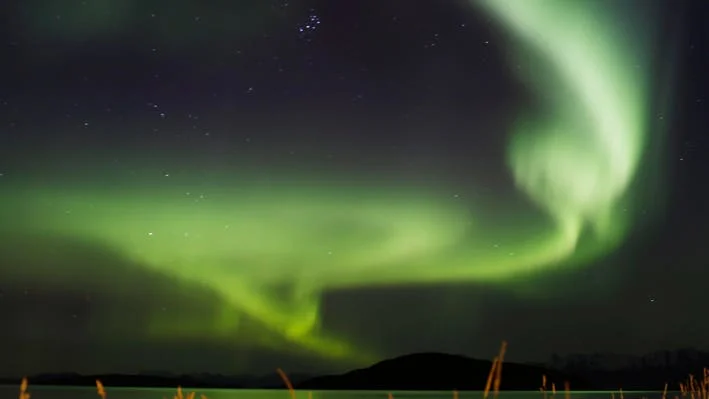
Lucky States Get a Chance to Witness Magical Northern Lights Display
Tonight, several states in the northern U.S. have a unique opportunity to witness a breathtaking spectacle: the Northern Lights, also known as the Aurora Borealis. This dazzling display is due to geomagnetic storm conditions disrupting Earth's magnetic field. If you live in one of the lucky states, prepare to be amazed!

According to the National Oceanic and Atmospheric Administration (NOAA), the aurora activity is expected to elevate with a Kp index of four on a scale of nine. This means the northern lights will be visible further from the north and south poles, providing a stunning visual experience.
These geomagnetic storms are triggered by solar activity, such as solar flares or coronal mass ejections. NASA notes that while spectacular, they can also cause radio blackouts, satellite disruption, and GPS interference. As the sun approaches its solar maximum phase, these celestial displays may become more frequent through 2026. In fact, reports indicate that after a peak in solar events was achieved as recently as October 2024, strong geomagnetic activity could be more common for the next couple of years.
When and Where to Watch
The geomagnetic storm is predicted to reach minor levels on Tuesday, May 6, and last through Wednesday, May 7, according to NOAA's forecast. While visibility might be less prominent on Wednesday and Thursday, the best time to catch the auroras is between 10 p.m. and 2 a.m. local time. Ideally, face north from a high spot away from city lights.
The best views will be in northern Canada and Alaska, but there's also a chance for those north of Iowa. States with a lower chance include northern parts of Washington, Idaho, Montana, North Dakota, South Dakota, Minnesota, Wisconsin, Michigan, and Maine. Notably, NOAA suggests checking their aurora view line, available for both tonight and tomorrow night, for the latest forecasts.
Pro Tips for Viewing and Capturing the Aurora
The beauty of the northern lights is that you don't need special equipment! They are visible with the naked eye. However, weather conditions are crucial. Avoid rain, fog, or clouds for the best view. Locate a dark spot far from urban light pollution.
Want to capture the moment? For smartphone users, NOAA recommends turning off the flash and switching to night mode. Experts suggest using a wide-angle lens with an aperture of f/4 or lower and setting the focus to the furthest possible setting with a traditional camera.
This event comes almost exactly a year after the extreme G5 geomagnetic storm of May 10-11, 2024, indicating heightened solar activity. The current forecast predicts a G1-rated geomagnetic storm, but as space weather is unpredictable, it could either weaken or strengthen.
Remember, your viewing experience depends heavily on clear skies and minimal light pollution. Will you be fortunate enough to witness this magical display tonight? Share your experiences and photos in the comments below!